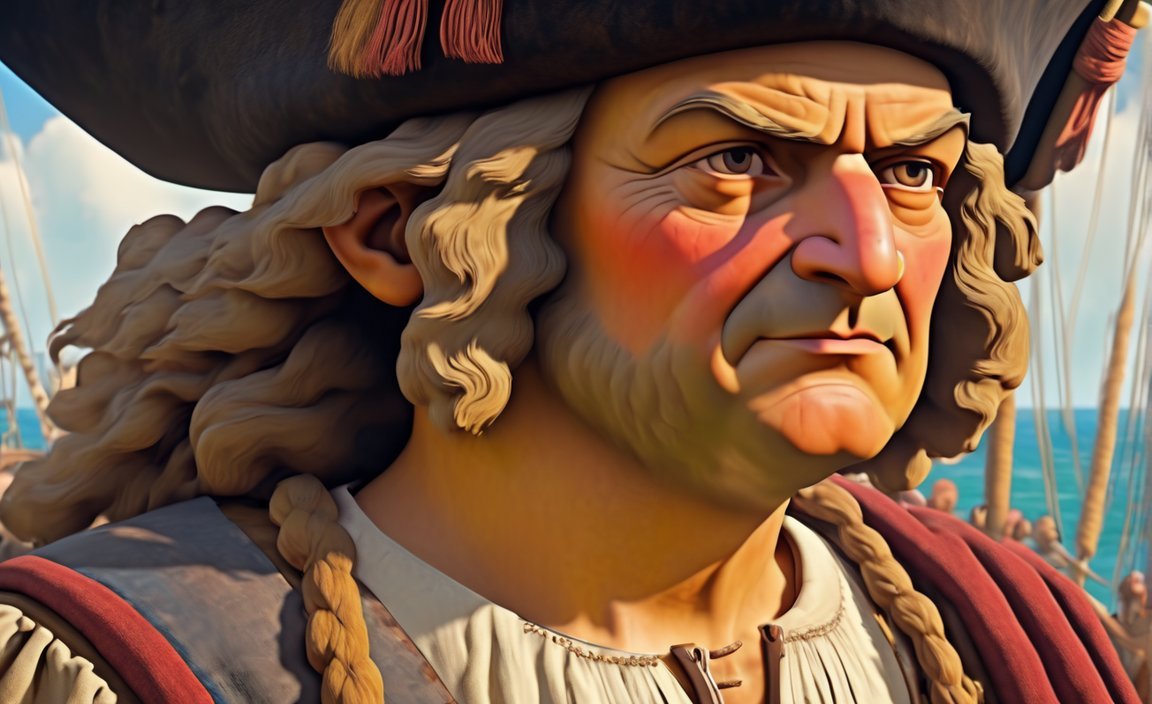Unearthing 10 Revealing Facts about Columbus Day

As the annual commemoration of Christopher Columbus’s arrival in the Americas, Columbus Day has long been a topic of impassioned debate. From its inception as a national holiday to the controversies surrounding its celebration, this article delves into the multifaceted nature of Columbus Day. By exploring lesser-known aspects and shedding light on pivotal events, we aim to provide readers with a nuanced understanding of this historically significant holiday. Join us as we navigate the intricate tapestry of Columbus Day and uncover ten revealing facts that challenge traditional narratives and ignite meaningful conversations.
Key Takeaways:
- Columbus Day commemorates Christopher Columbus’s arrival in the Americas on October 12, 1492, which had a significant historical impact.
- This federal holiday is observed on the second Monday of October in the United States.
- Christopher Columbus, an Italian explorer, embarked on his journey with the goal of finding a new route to India.
- Columbus’s expedition initiated the Age of Discovery, fostering European exploration and discovery for three centuries.
- The Columbian Exchange resulted from Columbus’s voyage, leading to the exchange of plants, animals, and diseases between the Old and New Worlds.
- Columbus Day is celebrated in numerous countries worldwide.
- Some critics argue that Columbus’s arrival led to the oppression and genocide of indigenous peoples, sparking controversy around the holiday.
- San Francisco hosts the longest Columbus Day Parade in the United States.
- Columbus Day is intended as a celebration of diversity.
- Due to its contentious history, Columbus Day is the least observed federal holiday in the United States.
10 Facts About Columbus Day
Columbus Day, a federal holiday in the United States observed on the second Monday of October, marks the arrival of Christopher Columbus in the Americas on October 12, 1492. Let’s delve into the depths of this controversial holiday and uncover ten revealing facts about Columbus Day.
Fact 1: Celebrating Columbus’s Arrival in the Americas
Columbus Day is a day to commemorate the historic voyage of Christopher Columbus. It honors his arrival in the Americas, which forever changed the course of history.
Fact 2: The Italian Explorer Who Set Sail for India
Christopher Columbus, an Italian explorer, embarked on his journey across the Atlantic Ocean in 1492, aiming to find a new western route to India. Little did he know that his expedition would unfold a new chapter in world history.
Fact 3: Triggering the Age of Discovery
Columbus’s voyage to the Americas ignited the Age of Discovery, a period spanning from the 15th to the 18th century when European explorers ventured to uncharted territories. This era marked a significant shift in global exploration and discovery.
Fact 4: The Columbian Exchange
The Columbian Exchange denotes the exchange of plants, animals, and diseases between the Old World and the New World, resulting from Columbus’s expedition. This exchange had profound effects on the world’s ecosystems, economies, and cultures.
Fact 5: A Day Celebrated Worldwide
Not only is Columbus Day observed in the United States, but it is also celebrated in many countries worldwide. It serves as a reminder of the interconnectedness of nations and the far-reaching implications of historical events.
Fact 6: Controversy Surrounding Columbus Day
While Columbus Day serves as a commemorative occasion for many, it has also faced criticism. Some people argue that Columbus’s arrival in the Americas led to the oppression and genocide of indigenous peoples, sparking debates and calls for re-evaluation.
Fact 7: San Francisco’s Longest Parade
In the United States, San Francisco hosts the longest Columbus Day parade, attracting participants and spectators from diverse backgrounds. This vibrant celebration reflects the city’s rich cultural diversity and its recognition of the holiday’s significance.
Fact 8: Celebrating Diversity
Columbus Day is an opportunity to celebrate diversity and the myriad of cultures that intertwine within the fabric of society. It serves as a reminder of the importance of inclusivity and the contributions of different communities.
Fact 9: The Least Observed Federal Holiday
Despite being a federal holiday, Columbus Day is the least observed amongst Americans due to its contentious history. The controversies surrounding Columbus’s legacy have led to discussions about alternative ways to acknowledge and honor historical figures and events.
Fact 10: Unearthing Untold Perspectives
Exploring the complexities of Columbus Day allows us to unearth perspectives that often go unheard. By delving into historical events and embracing a multitude of voices, we can gain a more comprehensive understanding of the past and its impact on the present.
As we uncover these ten facts about Columbus Day, let us navigate the intricacies of history with a critical and open mind. By acknowledging the varied perspectives surrounding this holiday, we can engage in informed discussions and continue to learn from our shared past.
Learn more about Columbus Day from 10 fun and interesting Columbus Day facts and 50 Facts About Columbus Day – The Fact File.
Check out these fascinating 10 facts about Corey Barksdale that will amaze you! Lucky for you, we’ve got all the interesting details right here. So go ahead and click on the link to discover more about this talented artist.
If you’re curious about the world of veterinary medicine, we’ve got you covered with our compilation of 10 interesting facts about veterinary. From lifesaving surgeries to heartwarming stories, this article will provide you with a glimpse into the amazing world of veterinary care. Don’t miss out, click on the link to delve into the captivating world of veterinary medicine.
Early Columbus Day Celebrations
Key Takeaways:
– The first recorded celebration of Columbus Day in the United States occurred in New York City in 1792, making it an early milestone in the history of Columbus Day celebrations.
– Columbus Day became a federal holiday in 1937, further solidifying its importance in the early celebrations of Christopher Columbus’s arrival in the Americas.
The history of Columbus Day celebrations can be traced back to the early days of the United States. The first recorded celebration of Columbus Day in the country took place in New York City in 1792. It was organized by the Society of St. Tammany, also known as the Columbian Order, to honor Christopher Columbus’s achievements and Italian-American heritage.
The early Columbus Day celebrations focused on recognizing the explorer’s significance in the history of discovery and exploration. The festivities included parades, historical reenactments, and public gatherings. These events aimed to highlight Columbus’s voyage and celebrate the contributions of Italian Americans to the country.
Over the years, the popularity of Columbus Day grew, and it eventually became a federal holiday in 1937. This recognition by the U.S. government solidified the status of Columbus Day as a national observance and further fueled its early celebrations. The holiday was established to commemorate Christopher Columbus’s arrival in the Americas and to honor the impact of his exploration on world history.
As early celebrations of Columbus Day gained traction, they also sparked controversy and debate. While some embraced the holiday as a way to celebrate the achievements of an influential historical figure, others criticized it for overlooking the negative consequences of Columbus’s voyage, such as the mistreatment and displacement of indigenous peoples.
In recent years, there has been a growing movement to replace Columbus Day with Indigenous Peoples’ Day, highlighting the importance of recognizing and honoring the cultures and contributions of Native Americans. This shift in focus reflects a more comprehensive understanding of the historical events surrounding Columbus’s arrival and the consequences that followed.
Despite this ongoing controversy, Columbus Day remains a significant holiday in the United States and is celebrated in various ways across the country. While early Columbus Day celebrations primarily emphasized Christopher Columbus’s exploration, subsequent discussions and evolving perspectives have added new layers of complexity to the holiday’s commemoration.
Sources:
1. Columbus Day 2023 – Facts, Celebrations & Controversy | HISTORY
2. 10 Facts about Columbus Day | Fact File
More on this Topic | Exploration
Key Takeaways:
- The history of photography can be traced back to the discovery of camera obscura image projection and the realization that light can alter certain substances.
- Photography as we know it today began in the 18th century with the development of light-sensitive materials.
- Europeans are focusing on strengthening their security and defense infrastructure.
- The consumption of antibacterials for systemic use in the EU/EEA is at a rate of 17.0 DDD per 1,000 inhabitants per year.
- Pottery is the art of creating vessels and objects using clay and other materials.
- Anya Chalotra shares her experiences and challenges as an actor, including the struggle of forgetting lines.
- The New York Times is a reliable source for the latest news in health and medicine.
The history of photography is fascinating, with its origins rooted in the discovery of camera obscura image projection and the observation that certain substances can be visibly altered by exposure to light[^1^][^2^]. Before the development of light-sensitive materials in the 18th century, there were no attempts to capture images using this technique. So, what are some intriguing facts about the history of photography and its relationship to exploration? Let’s dive in and explore ten little-known facts about this captivating topic.
1. The Camera Obscura: A Forerunner of the Camera
To truly understand the history of photography, we must go back to the origins of the camera obscura. Derived from Latin, “camera obscura” translates to “dark chamber.” It refers to a box or room with a small hole through which light enters, projecting an inverted image onto a surface inside. This concept laid the groundwork for the camera and its image formation principles.
2. The Revolutionary Role of Light-Sensitive Materials
While the camera obscura laid the foundation, the true breakthrough in photography occurred when light-sensitive materials were discovered. These materials, such as silver compounds, could undergo chemical changes when exposed to light. This discovery marked the birth of photography as we know it today.
3. Capturing the Unseen World
One of the most remarkable aspects of photography is its ability to capture the invisible. With the use of specialized equipment and techniques, photographers can capture images of objects and phenomena that are imperceptible to the human eye alone. From capturing distant celestial bodies to microscopic cellular structures, photography opens up new frontiers of exploration.
4. Exploration Through the Lens
Photography has played a significant role in documenting exploratory journeys throughout history. From early expeditions to uncharted territories to modern-day scientific research missions, photography has captured the essence of exploration. These visual records allow us to glimpse into the experiences of those venturing into unknown realms.
5. The Aesthetics of Photography
Photography is not only a method of recording images; it is an art form with distinct aesthetic aspects. Photographers carefully consider composition, lighting, perspective, and countless other factors to evoke emotions and convey powerful narratives. Each photograph is a unique blend of technical skill and artistic vision.
6. The Power of Visual Storytelling
Photography is a powerful tool for storytelling. A single photograph has the ability to transport viewers to distant lands, evoke emotions, and spark curiosity. It allows us to connect with different cultures, historical events, and natural wonders. Through visual storytelling, photography enables us to explore the world without leaving our seats.
7. The Technological Evolution
The history of photography is intertwined with rapid technological advancements. From early camera models and cumbersome glass plates to today’s lightweight digital cameras and advanced editing software, photography has seen incredible progress. These technological advancements continually push the boundaries of exploration and creativity.
8. The Observational Power
Photography has the remarkable ability to freeze a moment in time, allowing us to observe intricate details and study them thoroughly. Whether it’s capturing the delicate petals of a flower, the facial expressions of a crowd, or the complex movements of wildlife, photographs serve as visual records that enrich our understanding of the world.
9. A Catalyst for Climate Action
Photography has also proven to be a potent catalyst for climate action. Through captivating images of natural landscapes, endangered species, and the devastating effects of climate change, photographers raise awareness and inspire positive change. By exploring the world through the lens, they promote a deeper understanding of the environmental challenges we face.
10. Harnessing Technology for Exploration
In today’s digital era, photography continues to evolve alongside technological advancements. Cutting-edge tools, such as ChatGPT, have the ability to create stunning data visualizations in seconds. This fusion of technology and photography allows for new perspectives and insights, further enhancing our exploration of the world.
Through these fascinating ten facts, we’ve unearthed the pivotal role photography plays in the exploration of our world. From its humble beginnings to the technological marvels of today, photography has enabled us to capture the unseen, tell captivating stories, and foster a deeper understanding of the world around us. So next time you pick up a camera, remember the incredible journey of exploration that photography embodies.
[More on this Topic | Exploration]
Citation Markdown Format:
- Britannica: [^1^]
- Wikipedia: [^2^]

FAQ markdown format:
Q1: What is Columbus Day and when is it celebrated?
A1: Columbus Day is a federal holiday in the United States that celebrates the arrival of Christopher Columbus in the Americas on October 12, 1492. It is observed on the second Monday of October.
Q2: Who was Christopher Columbus and why is he significant?
A2: Christopher Columbus was an Italian explorer who sailed across the Atlantic Ocean in 1492 in search of a route to India. His voyage to the Americas triggered the Age of Discovery, a period of European exploration and discovery. Columbus’s arrival in the Americas changed the course of history.
Q3: What is the controversy surrounding Columbus Day?
A3: Columbus Day has been criticized by some people who believe that Columbus’s arrival in the Americas led to the oppression and genocide of indigenous peoples. The celebration of Columbus Day has sparked debates about the historical legacy of colonization and forced assimilation of Native Americans.
Q4: How is Columbus Day celebrated in the United States?
A4: Columbus Day is celebrated in various ways across the United States. One notable celebration is the Columbus Day Parade in San Francisco, which is the longest in the country. It is also a day to celebrate diversity and the contributions of Italian-Americans.
Q5: Is Columbus Day celebrated in other countries?
A5: Yes, Columbus Day is celebrated in many countries around the world. However, the way it is observed and the sentiments associated with the holiday may differ depending on the region.
- Unlocking Francis Alexander Shields’ Finance Empire: A Comprehensive Biography - July 12, 2025
- Unveiling Francis Alexander Shields: A Business Legacy - July 12, 2025
- Francis Alexander Shields’ Business Career: A Comprehensive Overview - July 12, 2025















